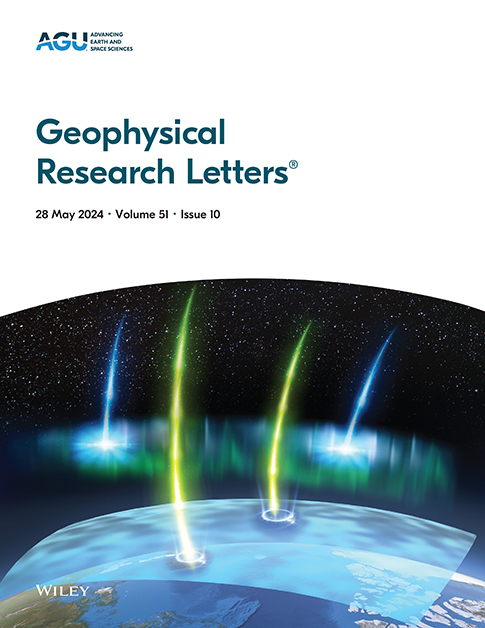2011-2021年副热带北大西洋快速变暖研究
IF 4.6
1区 地球科学
Q1 GEOSCIENCES, MULTIDISCIPLINARY
引用次数: 0
摘要
2011-2021年,副热带北大西洋上层2000 m呈快速升温趋势,不仅上层(0-300 m、300-700 m)和中深层(700 - 2000 m)都有显著的热积累。中深层的变暖约占2000米以上变暖的40%,超过了该层的全球平均水平。我们的分析表明,700米以上的变暖主要是由等气旋起伏变化驱动的,与异常反气旋大气环流密切相关。相比之下,中深层的变暖主要归因于香料变率,受副热带和亚极地平流和水团变化的影响。总体而言,本研究强调了中深度海洋热吸收在塑造副热带北大西洋海洋热含量变化中的重要性,并揭示了局地和远程过程的综合影响。本文章由计算机程序翻译,如有差异,请以英文原文为准。
On the Rapid Warming in the Subtropical North Atlantic in 2011–2021
A rapid warming trend was observed in the upper 2,000 m of the subtropical North Atlantic in 2011–2021, with significant heat accumulation not only in the upper ocean layers (0–300 m, 300–700 m) but also in the mid‐depth layer (700–2,000 m). Warming in the mid‐depth layer accounted for approximately 40% of the upper‐2000 m warming, exceeding the global average in this layer. Our analysis indicates that warming in the upper 700 m was primarily driven by isopycnal heave changes, closely linked to anomalous anticyclonic atmospheric circulation. In contrast, warming in the mid‐depth layer was mainly attributed to spice variability, influenced by advection and water mass changes in both the subtropical and subpolar regions. Overall, this study highlights the importance of mid‐depth ocean heat uptake in shaping the ocean heat content variability in the subtropical North Atlantic and reveals the combined impact of local and remote processes.
求助全文
通过发布文献求助,成功后即可免费获取论文全文。
去求助
来源期刊

Geophysical Research Letters
地学-地球科学综合
CiteScore
9.00
自引率
9.60%
发文量
1588
审稿时长
2.2 months
期刊介绍:
Geophysical Research Letters (GRL) publishes high-impact, innovative, and timely research on major scientific advances in all the major geoscience disciplines. Papers are communications-length articles and should have broad and immediate implications in their discipline or across the geosciences. GRLmaintains the fastest turn-around of all high-impact publications in the geosciences and works closely with authors to ensure broad visibility of top papers.
 求助内容:
求助内容: 应助结果提醒方式:
应助结果提醒方式:


